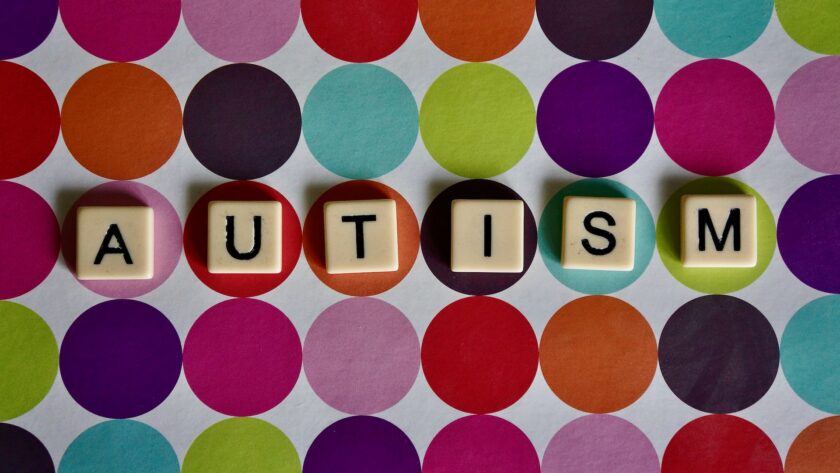Autism is a complex neurological disorder that affects how people interact and communicate with others. It can also affect how they process information and relate to their environment. Autism spectrum disorder (ASD) is the term used to describe a range of symptoms, which can vary significantly from one person to another. While there is no one-size-fits-all approach to treating autism, early diagnosis and intervention are crucial for helping children reach their full potential. In this blog, we will explore all aspects of autism, from its causes and symptoms to diagnosis and treatment options.
Causes of Autism
At this time, scientists aren’t completely certain what causes autism but research points to a combination of genetic and environmental factors. Studies have shown that certain genes related to autism are present in many people with the disorder, but it is unclear which ones lead to the symptoms associated with ASD. It is also possible that exposure to certain toxins or viruses may contribute to its development.
Symptoms of Autism
The symptoms of autism vary widely from person-to-person, but can include difficulty with social interactions and communication; repetitive behaviors; obsessive interests; sensory issues such as an aversion to loud noises or bright lights; and developmental delays. Some people may be able to function normally while others require special services throughout their lifetime.
Diagnosis of Autism
Diagnosing autism can be a long and complicated process that includes interviews with parents, teachers, and other professionals; observing behavior; and conducting physical, neurological, genetic, psychological, and developmental tests. Professionals may also use specific screening tools to determine if an individual meets the criteria for ASD.
Treatment of Autism
When it comes to treatment options for individuals on the autism spectrum, there is no one-size-fits-all approach. Rather than focusing solely on the symptoms associated with the disorder, many treatments involve helping the person learn how to better communicate and interact with others. This could mean speech therapy or using visual cues such as pictures to aid in communication. Behavioral therapy, occupational therapy, and social skills groups can also be beneficial in helping individuals on the autism spectrum learn how to navigate their world more successfully.
Speech Therapy
Speech therapy, also known as language therapy, helps individuals on the autism spectrum learn how to communicate more effectively and understand what others are saying. Therapists can help children learn to use nonverbal cues such as facial expressions and gestures to communicate, practice conversational skills with peers, and improve their ability to use language for a variety of purposes.
ABA Therapy
Applied Behavioral Analysis (ABA) therapy is a type of behavioral therapy that involves breaking down complex tasks into smaller, manageable steps and then teaching those steps through repetition. To gain the most benefit from ABA therapy, it should be tailored to an individual’s specific needs and abilities. This type of therapy can help children on the autism spectrum better understand and cope with ideas like making decisions or how to interact socially in different situations. For example, ABA McKinney Autism Therapy can help with social skills, communication, self-care, academics, and more.
Social Skills Groups
Social skills groups are designed to help individuals on the autism spectrum make and maintain meaningful relationships with others. These groups are usually led by a therapist or trained professional who can teach participants how to interact in social situations, practice conversational skills, and understand nonverbal communication.
Occupational Therapy
Occupational therapy (OT) focuses on helping individuals develop or improve skills related to everyday activities such as self-care, dressing, eating, school performance, and leisure activities. It can also help with motor coordination and sensory integration problems that may interfere with an individual’s ability to function in everyday life. OT can be beneficial for children on the autism spectrum who have difficulty focusing, following directions, or controlling their emotions.
Medication
In some cases, medications may be prescribed to help individuals on the autism spectrum manage symptoms associated with the disorder such as anxiety or aggression. However, it’s important to note that there is no cure for autism and medications cannot make up for any deficits in communication or social interaction. It’s important to discuss any medication options with a qualified health professional and keep in mind that medications may have side effects.
Behavioral Therapy
Behavioral therapy helps individuals on the autism spectrum learn how to cope with difficult behaviors, as well as develop new skills and behaviors. This type of therapy can be beneficial in helping children on the spectrum understand their actions and reactions, manage their emotions more effectively, and interact better with others. Behavior modification strategies may include positive reinforcement for desired behavior or token systems for rewarding good behavior. Behavioral therapies should always be tailored to an individual’s specific needs and abilities.
Other Treatment Options
Other treatment options for autism may include physical therapy, occupational therapy, speech-language pathology, nutritional counseling, sensory integration therapy, art therapy, assistive technology devices or computer software programs. Depending on an individual’s needs and abilities, any of these treatments may be beneficial for helping them reach their full potential.
Parent Education
It is important for parents of children on the autism spectrum to receive education about the disorder so that they can provide support and guidance to their child. Parent education can cover topics such as understanding the diagnosis, recognizing signs and symptoms of ASD, and developing strategies for effective communication. Additionally, parent education can help parents learn how to advocate for their child’s needs in the school system and other settings.
Support Groups
Lastly, support groups can be an important resource for families of individuals on the autism spectrum. These groups provide a safe and supportive environment where parents can share their experiences, get advice from other parents, and find support in times of need. Support groups can be a great way for families to connect with each other and learn about helpful resources in the community.

While there is no cure for autism, early diagnosis and intervention are critical for helping children reach their full potential. With the right treatment plan, people with ASD can lead meaningful lives that involve personal growth, learning new skills, and developing relationships with family and friends. By understanding autism and its associated symptoms better, we can make a positive difference in the lives of those living with this disorder.



